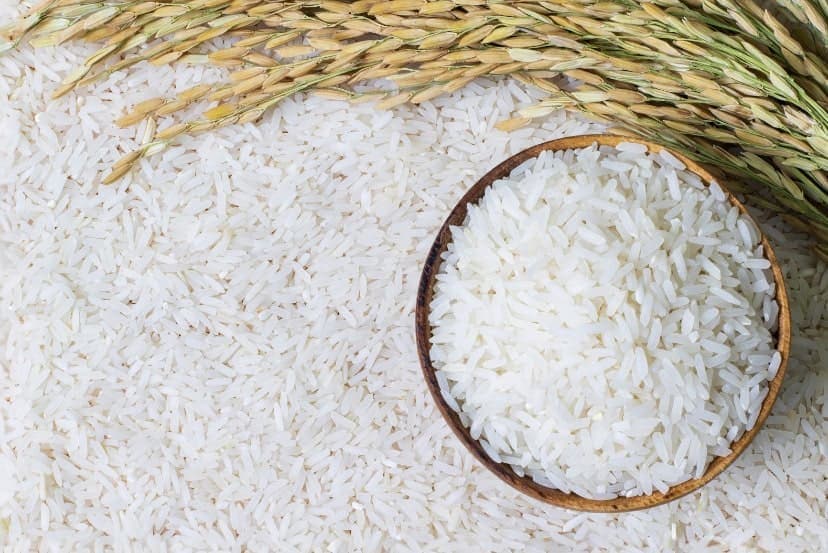Rice is a widely eaten food worldwide and a big crop in India. It’s a key item under the GST system, where it gets a special code called HSN. HSN means Harmonized System of Nomenclature—it’s like a global way of naming and numbering things we buy and sell. In India, lots of places grow rice, and it’s a major food for many people.
So, when we talk about rice in the tax system, we use this HSN code to make sure everyone understands and follows the same rules. It’s like giving rice its own special ID to keep things organized and fair for everyone.
Why is it Important to Know the HSN Code for Rice?
Knowing the HSN code for rice is crucial for buyers and sellers alike. This code ensures compliance with GST regulations, preventing potential confusion or penalties. As a buyer, understanding the HSN code aids in determining the correct tax rates applicable to specific rice types, fostering fair transactions.
For sellers, accurate HSN code application ensures adherence to regulatory standards, reducing the risk of complications and penalties. Essentially, the HSN code acts as a guide, promoting clarity in taxation, facilitating smooth transactions, and contributing to a transparent and compliant business environment in the realm of rice trade.
Rice and Its HSN Code
The HSN code for rice is like a special code with six numbers that helps us recognize and sort out the different kinds of rice. It’s kind of like a secret language for rice.
The code, which is 1006, tells us which type of rice it is. This special code is handy when it comes to taxes (GST), as it helps decide how much tax should be applied to that specific type of rice. So, it’s like rice having its own secret code to make things easier and fair when it comes to buying and selling.
Why is the HSN Code for Rice Important?
HSN code for rice is important because of the following reasons:
Uniform Classification: The HSN code for rice ensures a consistent way of categorizing different types of rice and other goods throughout the country.
GST Application: It plays a crucial role in determining the Goods and Services Tax (GST) rate applicable to various types of rice.
Nationwide Consistency: Regardless of where rice is bought or sold in the country, the HSN code ensures that the same rules and classifications apply.
Reducing Confusion: By using a standardized code, it minimizes confusion about the classification and taxation of different rice varieties.
Compliance Assurance: The HSN code helps businesses and individuals comply with GST regulations, ensuring that the correct tax rates are applied.
Ease of Implementation: The code simplifies the implementation of tax rules, making it easier for businesses and authorities to follow and enforce.
Fairness in Taxation: It contributes to a fair and uniform taxation system for rice, promoting equal treatment regardless of geographical location or type of transaction.
How Does HSN Code for Rice Work?
The HSN code for rice is like a special code with six numbers. Think of it as a secret code that tells us about different types of rice. The code 1006 is for rice, and it’s divided into smaller codes for specific kinds:
- 1006.10 is for rice in husk (paddy or rough).
- 1006.20 is for semi-milled or wholly milled rice.
- 1006.30 is for broken rice.
- 1006.40 is for basmati rice.
- 1006.50 is for other aromatic rice.
- 1006.90 is for other types of rice.
These codes help us know the type of rice, and the GST rate (a kind of tax) depends on which code it falls under. For example, basmati rice has a GST rate of 5%, while broken rice has a GST rate of 0%. It’s like giving each type of rice its own special code to make things clear and fair.
Understanding HSN Codes for Rice
Rice comes in different types, and the HSN codes break them down:
Rice in Husk (Paddy or Rough)
Rice in husk, under the HSN code, covers all rice types in their natural husk or rough state before processing. This category embraces long-grain, medium-grain, and short-grain rice, the go-to choices for various culinary purposes. These grains, with their protective outer layer intact, represent the initial stage of rice production.
Whether it’s the elongated long-grain, the versatile medium-grain, or the compact short-grain variety, all are included. Commonly used in cooking, these rice types retain their natural form until further processing, providing a diverse range of options for culinary enthusiasts and serving as the foundation for numerous delectable dishes..
Rice, Semi-milled or Wholly Milled
The HSN code category for rice, semi-milled, or wholly milled, encompasses rice that has undergone partial or full processing, removing the outer layers of the grain. This sub-heading includes popular varieties like white rice, brown rice, and parboiled rice, each extensively used in diverse cuisines. White rice, stripped of its outer layers, is a staple in many dishes.
Brown rice, with its bran layer intact, is a healthier alternative. Parboiled rice, pre-soaked and partially boiled before milling, offers unique texture and nutritional benefits. These processed rice types, falling under this HSN code, cater to a wide range of culinary preferences and dietary needs.
Broken Rice
The HSN code category for broken rice consists of grains that fracture during the milling process. These broken rice grains, not meeting the whole grain standard, find purpose in various applications. Commonly utilized in the production of rice flour and other food products, broken rice contributes to culinary diversity. Additionally, it serves a dual role as a valuable feed for livestock.
The fragments resulting from milling, instead of going to waste, play a vital role in supporting both human consumption and animal nutrition. This versatile use of broken rice aligns with sustainable practices in the food and agriculture industries.
Basmati Rice
Basmati Rice, recognized for its aromatic and long-grain qualities, holds a special place for its distinctive flavor. Cherished globally, it is a sought-after ingredient in various culinary traditions. This unique rice variety, with its enticing fragrance, imparts a delightful essence to dishes like biryani and pulao.
The elongated grains of Basmati Rice, when cooked, remain separate and fluffy, contributing to the texture and taste of these iconic recipes. Beyond its culinary appeal, Basmati Rice reflects cultural richness, making it a flavorful staple in kitchens worldwide and an essential component of celebrated dishes that bring joy to the dining table.
Other Aromatic Rice
Under the HSN code, ‘Other Aromatic Rice’ encompasses diverse aromatic varieties such as jasmine and black rice, each celebrated for its unique and pronounced flavors. These aromatic rice types add a distinctive touch to a wide range of cuisines, enriching culinary experiences with their exceptional taste profiles.
Jasmine rice, with its floral aroma, and black rice, with its nutty and earthy notes, stand out among the aromatic options. Their versatility makes them popular choices in various cultural dishes, contributing not only to taste but also to the vibrant tapestry of flavors that define global culinary landscapes.
Other Rice
The HSN code category ‘Other Rice’ covers a diverse array of remaining rice types, including glutinous, wild, and red rice varieties. These distinct grains, falling under this classification, contribute to the rich tapestry of global culinary choices. Glutinous rice, known for its sticky texture, and wild rice, offering a robust and nutty profile, bring unique characteristics to different dishes.
Red rice, with its nutty flavor and vibrant color, adds both taste and visual appeal to various cuisines. The inclusion of ‘Other Rice’ in the HSN code recognizes and embraces the multitude of flavors and textures that different rice varieties bring to the culinary world.
Remember, GST rates may vary, so check the HSN code and applicable rate before buying or selling rice.
Also Read: HSN Codes: What You Need to Know for Trade and Taxation
Final Words
Understanding the HSN code for rice is like having a special language that helps everyone follow the same rules when buying and selling rice. It’s like giving each type of rice its own secret code, making things clear and fair. From rice in its natural husk to aromatic varieties like basmati and jasmine, the HSN codes help us know the type of rice and the tax rate it carries.
It’s a system that brings order and fairness, ensuring that whether you’re cooking, trading, or enjoying diverse cuisines, everyone plays by the same rules. Just remember to check the HSN code for a smooth and fair rice journey!
FAQs
What is HSN code for rice?
The HSN code for rice is 1006. It is a six-digit code that is used to classify different types of rice based on their characteristics.
What types of rice fall under the HSN code for rice?
The HSN code for rice covers all varieties, such as long-grain, medium-grain, and short-grain rice, along with basmati rice, aromatic rice, and broken rice.
How is the GST rate for rice determined?
The GST rate for rice is decided by the HSN code assigned to it. The type of rice and the state of sale can influence the GST rates, creating potential variations.
Can the HSN code for rice be changed?
The HSN code for rice is fixed and cannot be altered. Changes or updates to the HSN code are determined and implemented by government or regulatory authorities.
Is it mandatory to include the HSN code for rice on invoices?
Certainly, including the HSN code for rice on invoices is mandatory under GST regulations. This practice ensures precise classification and taxation of rice transactions.
Also Read: Demystifying HSN Codes: Impact on Your Business and Its Significance





